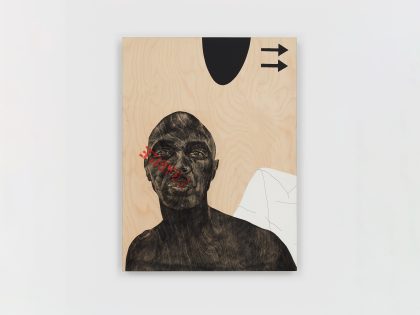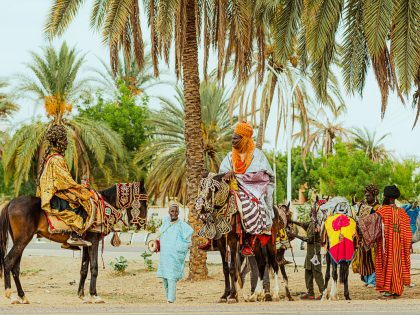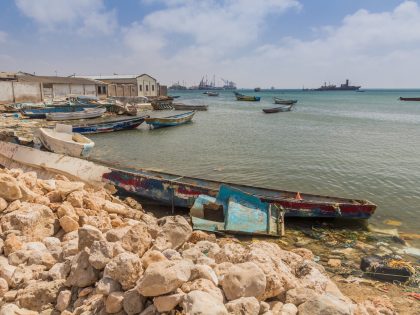ZANU’s neo-liberal turn (again) and the Shutdown in Zimbabwe
How to make sense of the early 2019 protests in Zimbabwe.

Blocked drains in Mbare, a section of Harare, 2011. Image by P. Feiereisen via Flickr CC.
Internet/social media remains shut down. Shops closed, schools closed, no public transport, petrol stations closed. Food fast running out in homes. Robert Mugabe International Airport open, but flights disrupted. Acting pres Gen. C. Chiwenga silent.
Zimbabwe’s government closed down social media sites by Wednesday morning, 16 January. And according to reports security services are conducting a systematic crackdown on the widespread protests over a 150 per cent increase in fuel duty. Over the last two days, Zimbabwe’s police and military have killed five people and wounded twenty-five more at least, with some estimates far higher. The extent of this crackdown and how it will all end up remain unclear. We do know that this crisis is not just a political contest between the ruling ZANU(PF) and opposition MDC parties, but a widespread response to the government’s attempt to restructure the economy. The immediate cause of the protests—the decision to slap such a huge tax increase on fuel—is in line with President Emmerson Mnangagwa’s stated policy of “prosperity through austerity.” In adopting these reforms, he makes no bones about following in the footsteps of Margaret Thatcher’s neoliberal restructuring of the UK economy in the 1980s.
Zimbabwe’s economic impasse
The economic challenges facing Zimbabwe are immense. Since 2001, Zimbabwe’s imports have been greater than its exports, which has drained the economy of foreign exchange. After severe hyperinflation in 2008, a new power-sharing government of ZANU(PF) and the MDC dollarized the country’s currency, which though creating tremendous hardships—such as wiping out people’s savings and pensions—did bring inflation under control. It did not, though, address the country’s underlying economic issues. The country still had to service significant external debt and the imbalance of payments meant foreign exchange continued to pour out of the economy depleting the government’s reserves. The strengthening of the US dollar and a lack of foreign investment in the country after 2013 made the situation worse, creating a liquidity crisis. In response, the government began the equivalent of printing more money by introducing a successive set of alternative currencies: bond coins, bond notes, and an electronic equivalent know as Real Time Gross Settlement (RGTS). Although officially pegged to the US dollar, people were wary about whether these new currencies would retain their value after the experiences of hyperinflation, which caused inflation to rise. The country’s leaders at this time were also engulfed in a vicious set of political battles about ZANU(PF) succession, which made any concerted effort to address these issues all but impossible. By 2016, the Zimbabwean government decided to pay government workers—whose wage bill is around 90 percent of total government revenue—in RGTS. All of these measures fueled inflation driving the economy further into trouble.
ZANU(PF)’s neo-liberal turn
These were the economic circumstances that Mnangagwa faced when he became President in November 2017 through a coup. Mnangagwa and his allies in the military were quick to take some key steps to establish the legitimacy of the new government. First, they strained to ensure that no-one, and particularly not Mugabe, talked of a “coup” in order to get external recognition from the African Union, which the British Government went along with. Second, they sought to portray their rivals, known as G40, as a dangerous, criminal grouping that were jeopardizing the safety and security of the nation—hence the coup’s code name Operation Restore Legacy. Third, Mnangagwa promised that he would address the everyday economic problems facing Zimbabweans, in part, through a strategy of re-engaging with international donors. “Zimbabwe” the new president said, “was open for business.” This agenda was at the centre of ZANU(PF)’s campaign in the August 2018 election—which Mnangagwa was highly controversially declared the winner of with 51% of the vote.
To achieve this developmental agenda, Mnangagwa appointed Mthuli Ncube as his Finance Minister, a former Chief Economist at the African Development Bank, South African business owner and Oxford professor. Together, Mnangagwa and Ncube resorted to austerity policies and tax increases to fix the holes in the public finances. A slew of these reforms came in Ncube’s 2019 budget, such as limiting payments to public employees basic salaries and the “rationalization” of government functions. Mnangagwa stated that the aim of this agenda was more extensive than just rebalancing the government’s books. In a piece apparently written by Mnangawa for the Financial Times last November, which reads in parts like an early 1990s IMF report, he states that:
[T]he national budget must be balanced and spending reined in… A large and inefficient public sector cannot be allowed to hold back private enterprise… Privatisation and the reform of state-owned enterprises are also key components of this strategy.
Implicit in Mnangagwa’s rhetoric are the tired old tropes of the public sector being wasteful and inefficient—ideas that fail to acknowledge the central role that public sector professionalism has played in ensuring the delivery of many of the country’s vital services despite desperately poor conditions.
Of course, this agenda was also partly a strategic play designed to gain the legitimacy that would open up access to international sources of foreign exchange. (It seems improbable that Mnangagwa is so committed to the free market that he would privatize the parts of the state that serve party leaders’ private accumulation.)
The people’s mutiny
Six months on from the 2018 election and most Zimbabweans are facing tremendous hardships. The price of basic commodities has soared. Bread prices increased from 90 cents to $1.40 last year and are expected to increase again. Transport costs and school fees have increased. Doctors have been on strike for weeks over their low pay and shortages of medical supplies in clinics and hospitals, making access to health care even harder. Last week, the typical price of a beer also increased by 25 percent. It was under these circumstances, that the government announced on Saturday that fuel duty would be increased by 150 per cent. Over the course of a night, the change in fuel cost meant that thousands of people simply could not afford to go to work the next morning.
The move caused widespread outrage and led to the Zimbabwean Congress for Trade Unions and Pastor Evan Mawarire to call a national strike. Yet unlike Zimbabwe’s historic forms of demonstrating that have tended to be located in Harare or Bulawayo and organized by the opposition party or Trade Unions, these protests are much less organized and much more widespread. Police vehicles and stations have been burnt down, and police officers chased through the streets. Looting has been pervasive and spread beyond the fuel stations that were initially targeted as political symbols to all sorts of shops. Social media is full of commentary about wanting the middle-classes to suffer. This unrest is less a case of organized activism than, in Zygmut Bauman’s words, “a mutiny of defective and disqualified consumers.”
This unorganized and unaccountable unrest is potentially much more politically destabilizing for the government. There has been a varied and unclear response by Zimbabwe’s security services. In smaller towns and high-density suburbs where protests have erupted, such as Karoi, Kadoma, Epworth and Chitungwiza, police and army units have dealt harshly with protestors. Some areas of Bulawayo have been no-go areas for security services. Army officers in plain clothes have been seen on the streets with semi-automatic weapons. Amidst all of this the country’s political leaders have remained remarkably quiet. Mnangagwa has tweeted a statement calling for “calm and peace” and yet remains in Russia.
Looking ahead: Similarities and differences
We’ll wait and see what the effects of this crackdown are on Zimbabwean politics. If history is a judge, Zimbabwe’s experience of Structural Adjustment in the early 1990s is ominous. Against a backdrop of corruption scandals in the party, the then Finance Minister Bernard Chidzero led a program of economic reforms that caused widespread hardship and protest out of which emerged a coalition of civic groups that went on to form the MDC. In response, Chidzero lost his job and the party took a spectacular change of direction to focus on land reform, which involved the politicization of the state, the repressive clamp down on opposition groups, and a massive expansion of party corruption. Similarly today, ZANU(PF)’s claim that the people must face necessary hardship is undermined by the large amounts of the country’s mining wealth which remain missing as well as the conspicuous consumption of the party elite. An estimated $2.8 billion in illicit outflows from the country, between 2009 and 2013 largely from the mining sector which was controlled by ZANU(PF) and military leaders. Does this mean that if protests continue Mthuli and his program might be ditched? Possibly.
Yet, 2019 is not 1999. Whilst there are similarities, an important difference between then and now is how military leaders are reinventing their own political role in the country’s politics. (The Vice President is retired General Constantino Chiwenga; Sibusiso Moyo, the general who announced November 2017’s coup, is foreign minister; Perence Shiri, the head of the air force, is minister of agriculture and land affairs). ZANU(PF)’s long standing principle that the party guides the gun, has been called into question by the coup—and it is unclear how firm a grip Mnangagwa has over the levers of power. In dealing with popular protest, as shown in the demonstrations in August, military units will much more easily use lethal force than police units. In the short term this presents a worrying picture for where we might be headed.



















